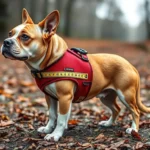
Introduction
Understanding the nuances of dog health care is crucial for any responsible pet owner. One significant aspect of canine health that often requires attention is the process of caesarean sections in dogs. A caesarean section is a surgical procedure that may be necessary to deliver puppies when natural birth is not viable or safe for the mother or the puppies. Knowing when and how to care for a dog undergoing a C-section is vital for ensuring the health and well-being of both the mother and her litter.
This article covers the comprehensive aspects of caesarean sections care for dogs, from understanding the procedure to post-operative care and potential complications.
Understanding Caesarean Sections in Dogs
What is a Caesarean Section?
A caesarean section (C-section) is a surgical procedure used to deliver puppies through an incision in the mother dog’s abdomen and uterus. This method is often employed when a natural birth poses significant risks to the mother or her puppies. Natural birth may not always be feasible due to various factors, and understanding these differences is essential for dog owners.
Indications for Caesarean Sections
Several factors may necessitate a caesarean section:
- Puppy Size: If the puppies are too large for the birth canal, a C-section may be required.
- Mother’s Health: Conditions such as infections, uterine inertia, or any other health issues can complicate natural birth.
- Breed Predispositions: Certain breeds, like Bulldogs, Poodles, and Dachshunds, have a higher likelihood of requiring C-sections due to their anatomy.
- Age: Older dogs or dogs that have had previous birthing complications may also be at risk.
The Procedure
The caesarean section procedure involves several steps:
- Anesthesia: The mother dog is administered a safe anesthetic to ensure she remains unconscious and pain-free during the surgery. It’s crucial to choose anesthetics that are safe for both the mother and the puppies.
- Incision: A veterinarian makes an incision in the abdomen to access the uterus.
- Puppy Delivery: Puppies are removed from the uterus, and the veterinarian ensures they are breathing and healthy.
- Closure: After the puppies are delivered, the uterus and abdomen are sutured closed.
Typically, the entire procedure lasts about an hour, but the exact duration can vary based on individual circumstances.
Pre-Operative Care for Dogs
Health Assessment
Before a caesarean section, a thorough health assessment is crucial. This may include:
- Blood Tests: To check for any underlying health issues.
- X-rays or Ultrasounds: To determine the number and size of puppies and assess the mother’s health.
These evaluations help ensure that the mother is fit for surgery and that any potential complications are identified early.
Preparing the Dog
Preparation is key for a successful caesarean section. Guidelines include:
- Fasting: Dogs are typically required to fast for several hours before surgery to reduce the risk of complications during anesthesia.
- Vaccinations: Ensuring that the mother is up to date on vaccinations can help prevent infections post-surgery.
Owner’s Role
As a dog owner, your support is invaluable. Here’s how you can help:
- Calm Environment: Create a peaceful atmosphere to minimize anxiety. Speak softly and provide comfort.
- Familiar Items: Bring along a favorite blanket or toy to help ease any stress.
Post-Operative Care
Immediate Post-Operative Care
After the caesarean section, monitoring the mother is crucial. Key signs to watch for include:
- Bleeding: Some discharge is normal, but excessive bleeding or bright red blood can indicate a problem.
- Infection: Watch for swelling, redness, or discharge at the incision site.
Veterinarians may recommend keeping the mother in a quiet space for recovery.
Caring for the Newborn Puppies
Immediately after surgery, it’s essential to ensure that the newborn puppies receive colostrum, the first milk rich in antibodies. Here’s how to assist:
- Nursing: Help position the puppies to nurse, especially if the mother is groggy from anesthesia.
- Supplementation: If the mother is unable to nurse, be prepared to provide puppy formula.
Long-Term Care for the Mother
Post-operative care doesn’t end after the first few days; here’s what to keep in mind:
- Rest: The mother should have a quiet and comfortable area to recuperate.
- Nutrition: Provide high-quality nutrition to support recovery and nursing. Hydration is equally important.
- Follow-Up Visits: Schedule visits to the veterinarian to ensure proper healing and address any concerns.
Potential Complications
Common Complications
While caesarean sections are generally safe, complications can arise. Some common risks include:
- Infection: Incisions can become infected, leading to severe complications.
- Anesthesia Risks: Though rare, some dogs may have adverse reactions to anesthesia.
When to Seek Veterinary Help
As a responsible pet owner, be vigilant. Contact your veterinarian if you notice any of the following:
- Persistent vomiting
- Severe lethargy
- Lack of appetite
- Signs of pain or distress
Preventative Measures
Importance of Regular Veterinary Check-ups
Regular veterinary visits can significantly impact the health of both the mother and puppies. Routine examinations can help identify potential issues before they escalate. Discuss breeding plans with your veterinarian to ensure the best outcomes.
Nutrition and Health Maintenance
Proper nutrition during pregnancy is essential. Here are some recommendations:
- High-Quality Diet: Feed a balanced diet formulated for pregnant and nursing dogs.
- Supplements: Discuss with your vet what vitamins or minerals might benefit your dog during this time.
Understanding Dog Breeds and Their Needs
Certain breeds are more prone to complications during birth. Understanding these predispositions can help you make informed decisions about breeding practices.
For instance, brachycephalic breeds like Bulldogs often require caesarean sections due to their unique anatomy. Prospective breeders should educate themselves about these risks.
Conclusion
Understanding the intricacies of caesarean sections care for dogs is vital for ensuring the health of both the mother and her puppies. By being informed and prepared, dog owners can play a crucial role in their pet’s recovery and overall well-being. Consulting with veterinarians for personalized care plans is essential to navigate the challenges of canine reproduction and health care effectively.
FAQs
What are the signs that my dog may need a caesarean section?
Signs may include prolonged labor without progress, distress, or if your dog is a breed known for needing surgical assistance during delivery.
How long does recovery take after a C-section?
Most dogs will need at least two weeks of rest and limited activity to allow for proper healing.
Can I prevent the need for a C-section?
While not all C-sections can be prevented, regular veterinary check-ups and understanding your breed’s specific needs can help minimize risks.
What should I do if I notice complications post-surgery?
Seek immediate veterinary attention if you observe signs of infection, excessive bleeding, or if the mother shows unusual behavior.
By being proactive and informed, dog owners can ensure a safe and healthy experience during and after caesarean sections.









